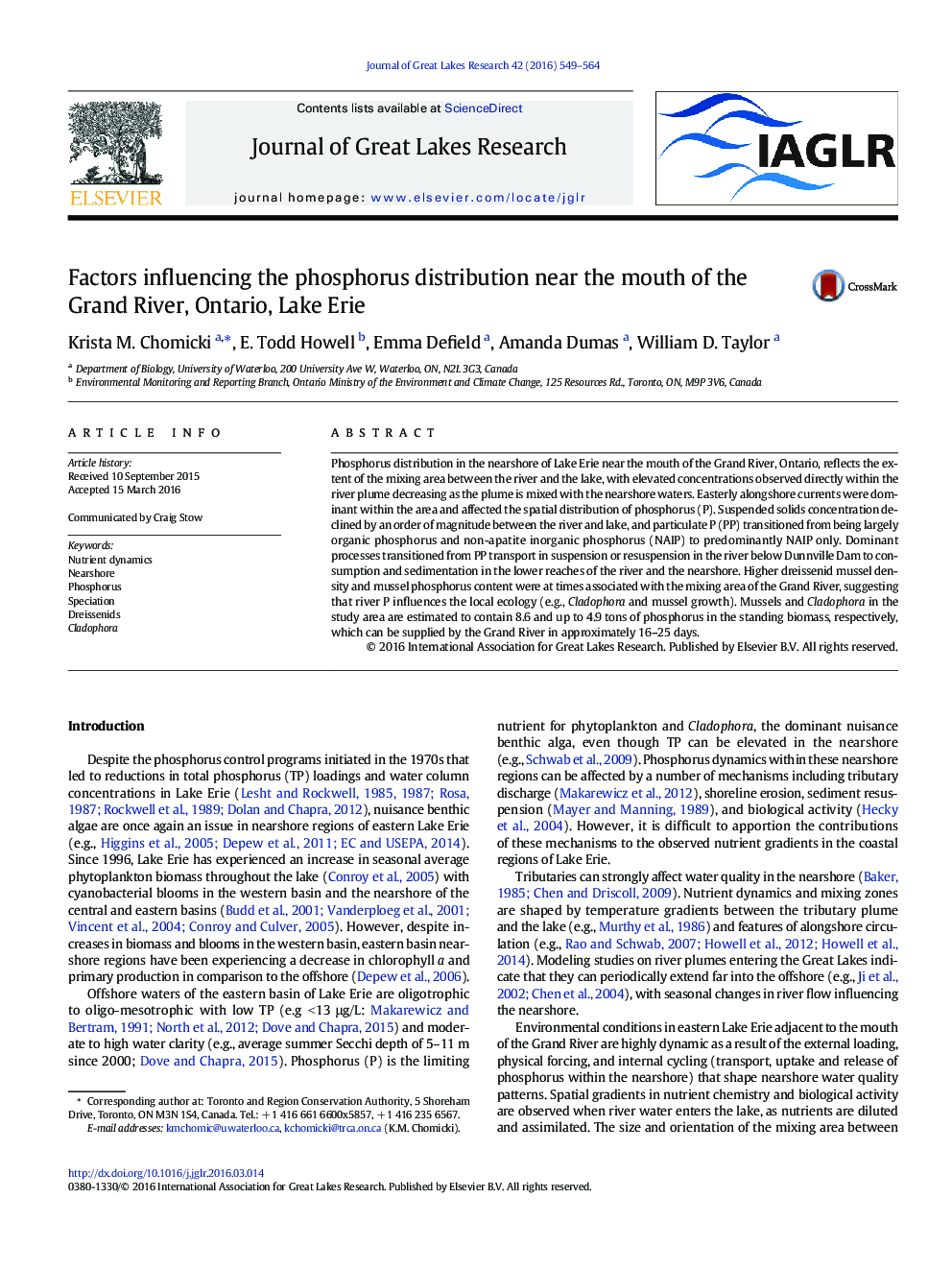| Article ID | Journal | Published Year | Pages | File Type |
|---|---|---|---|---|
| 6304656 | Journal of Great Lakes Research | 2016 | 16 Pages |
Abstract
Phosphorus distribution in the nearshore of Lake Erie near the mouth of the Grand River, Ontario, reflects the extent of the mixing area between the river and the lake, with elevated concentrations observed directly within the river plume decreasing as the plume is mixed with the nearshore waters. Easterly alongshore currents were dominant within the area and affected the spatial distribution of phosphorus (P). Suspended solids concentration declined by an order of magnitude between the river and lake, and particulate P (PP) transitioned from being largely organic phosphorus and non-apatite inorganic phosphorus (NAIP) to predominantly NAIP only. Dominant processes transitioned from PP transport in suspension or resuspension in the river below Dunnville Dam to consumption and sedimentation in the lower reaches of the river and the nearshore. Higher dreissenid mussel density and mussel phosphorus content were at times associated with the mixing area of the Grand River, suggesting that river P influences the local ecology (e.g., Cladophora and mussel growth). Mussels and Cladophora in the study area are estimated to contain 8.6 and up to 4.9Â tons of phosphorus in the standing biomass, respectively, which can be supplied by the Grand River in approximately 16-25Â days.
Related Topics
Physical Sciences and Engineering
Earth and Planetary Sciences
Earth and Planetary Sciences (General)
Authors
Krista M. Chomicki, E. Todd Howell, Emma Defield, Amanda Dumas, William D. Taylor,
